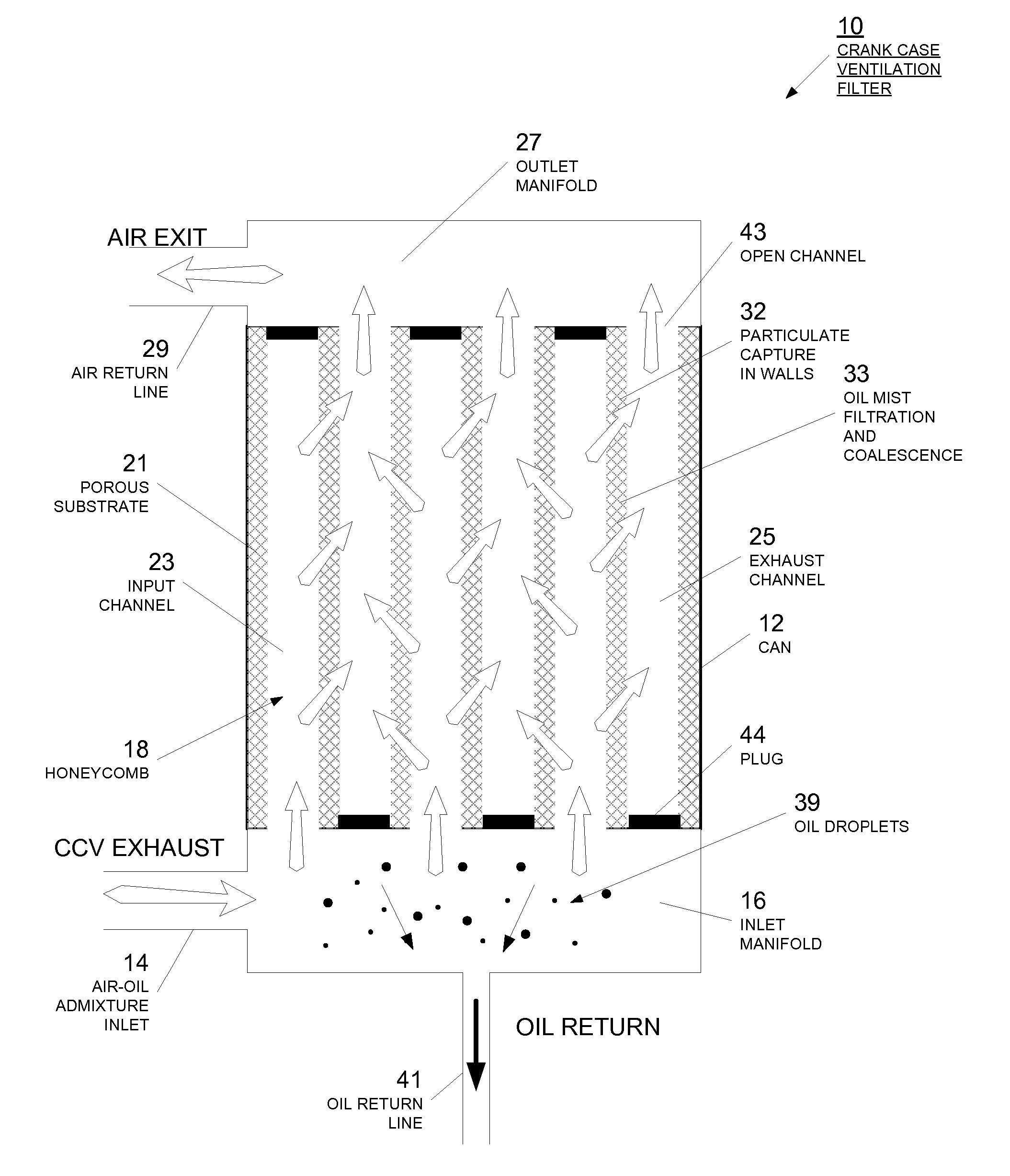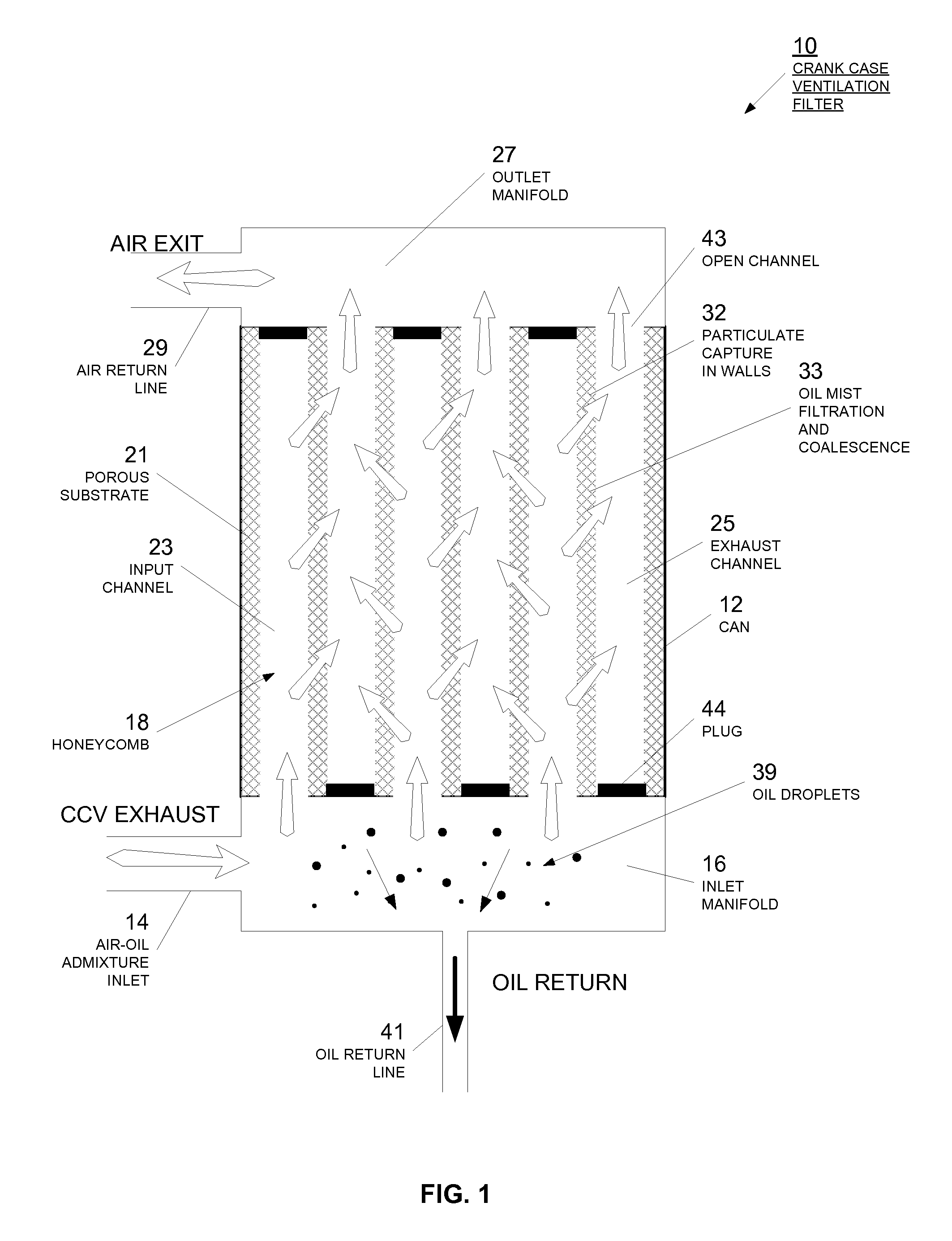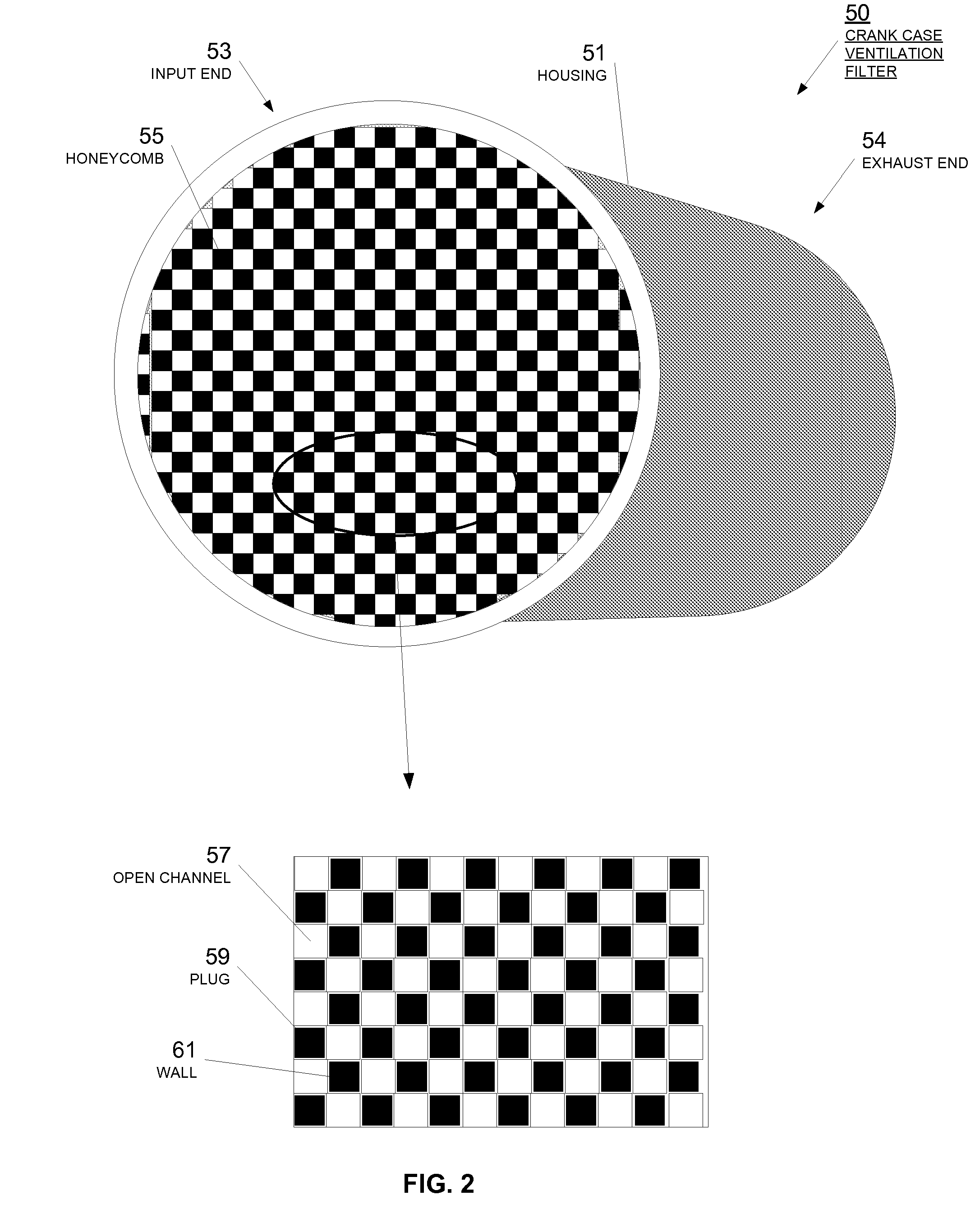Method and apparatus for a gas-liquid separator
a gas-liquid separator and separator technology, applied in the field of devices, can solve the problems of insufficient trapping, inconvenient operation, and the filter needs to be as small as possible, and achieve the effect of being convenient and efficien
- Summary
- Abstract
- Description
- Claims
- Application Information
AI Technical Summary
Benefits of technology
Problems solved by technology
Method used
Image
Examples
Embodiment Construction
[0022] Detailed descriptions of examples of the invention are provided herein. It is to be understood, however, that the present invention may be exemplified in various forms. Therefore, the specific details disclosed herein are not to be interpreted as limiting, but rather as a representative basis for teaching one skilled in the art how to employ the present invention in virtually any detailed system, structure, or manner.
[0023] Referring now to FIG. 1, a gas-liquid filter is illustrated. The gas-liquid filter is illustrated as a crank case ventilation filter 10 for separating oil from a gas exhausted from the crank case of an engine. One skilled in the art will appreciate that while the illustrative embodiment of FIG. 1 is directed toward a crank case ventilation of an internal combustion engine, such as a diesel or gasoline engine, the filter 10 can be used for a variety of gas-liquid separation applications, such as, for example, in an air compressor. Crank case ventilation fi...
PUM
| Property | Measurement | Unit |
|---|---|---|
| porosity | aaaaa | aaaaa |
| diameter | aaaaa | aaaaa |
| diameter | aaaaa | aaaaa |
Abstract
Description
Claims
Application Information
 Login to View More
Login to View More - R&D
- Intellectual Property
- Life Sciences
- Materials
- Tech Scout
- Unparalleled Data Quality
- Higher Quality Content
- 60% Fewer Hallucinations
Browse by: Latest US Patents, China's latest patents, Technical Efficacy Thesaurus, Application Domain, Technology Topic, Popular Technical Reports.
© 2025 PatSnap. All rights reserved.Legal|Privacy policy|Modern Slavery Act Transparency Statement|Sitemap|About US| Contact US: help@patsnap.com



